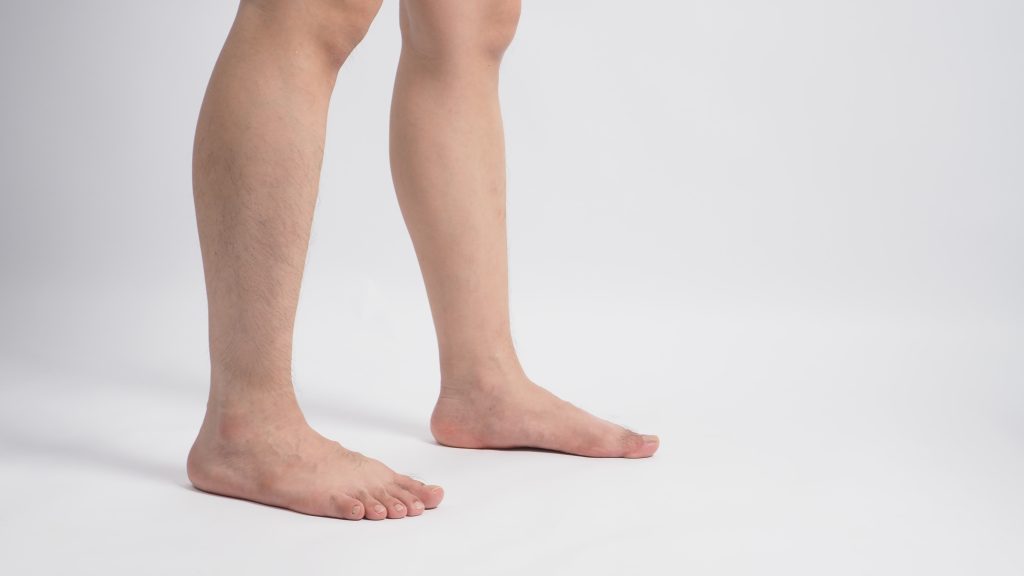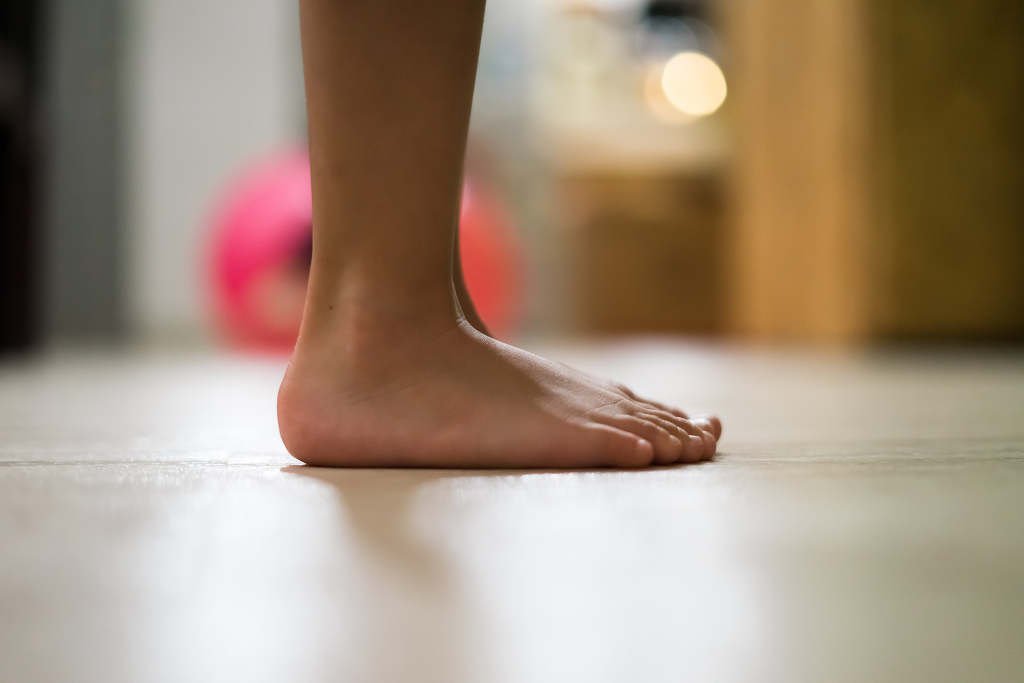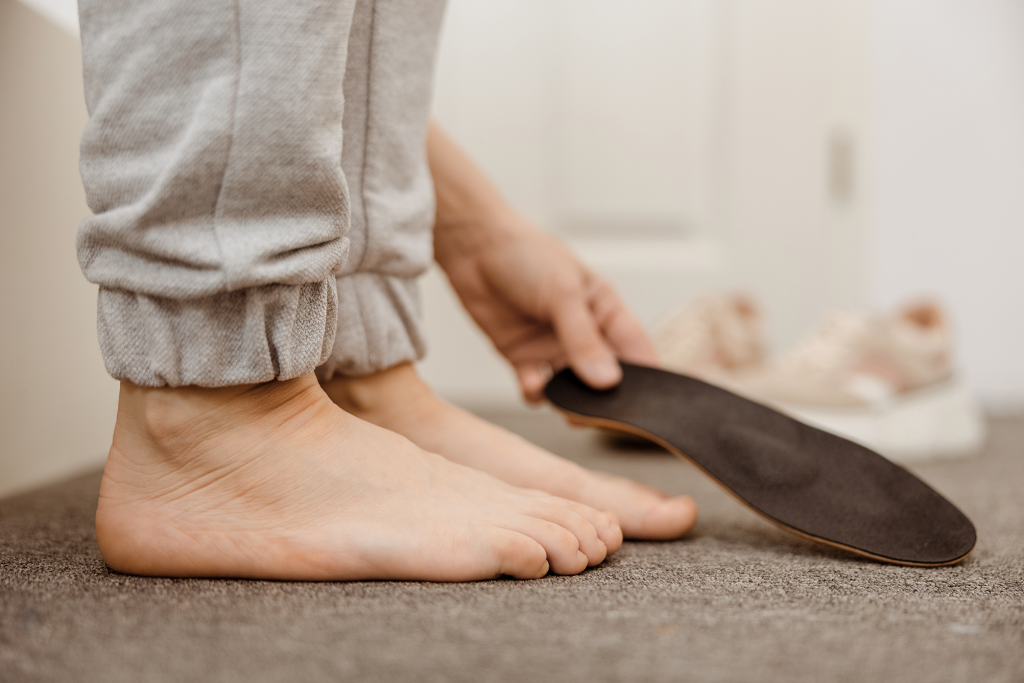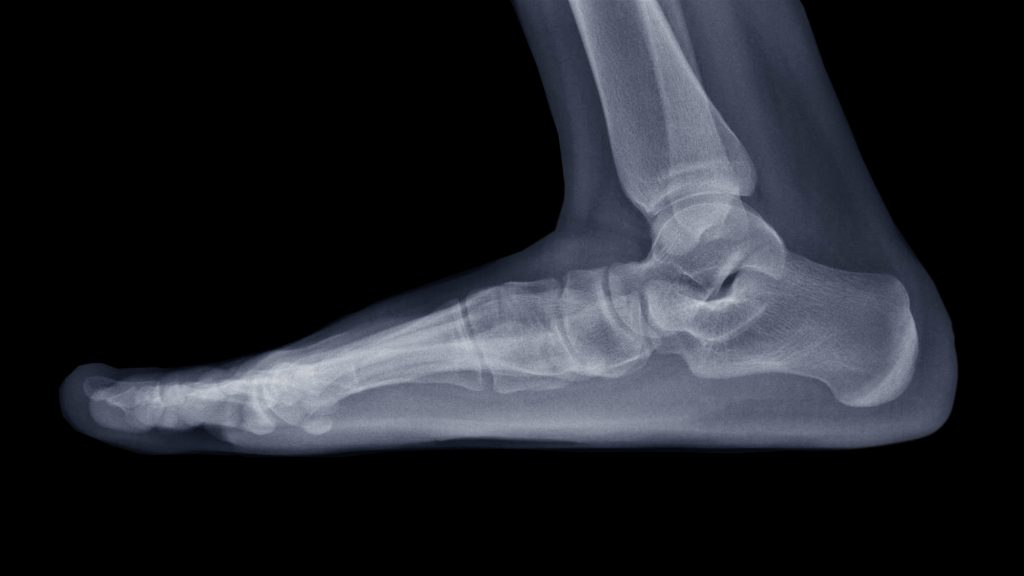Flat feet in adults | Your flat foot specialist from Vienna
Flat feet - Everything you need to know about this condition
Flat feet (pes planus) are one of the most common foot deformities and affect people of all ages.
Alternatively, the terms flat foot or fallen arches are also used to describe the change in foot position.
Flat feet are characterized by a flattened arch, where the entire sole of the foot touches the ground almost completely when standing, walking or running.
Although flat feet are often considered harmless, they can lead to considerable discomfort and limitations if left untreated.
Many sufferers experience pain in their feet, knees or even back without knowing the exact cause.

In this article, we would like to give you a comprehensive overview of the topic of flat feet.
We explain what distinguishes a healthy foot from a flat foot, what causes can lead to this deformity and what treatment options are available.
Whether you are affected yourself or simply want to learn more about this widespread problem, this article will help you to better understand flat feet and find suitable measures for prevention or treatment.
What is a flat tire?
Flatfoot, also known as fallen arches, fallen arches or flat arches (depending on the type of deformity), is a foot deformity in which the longitudinal arch of the foot sinks.
In severe cases, the entire sole of the foot lies flat on the ground.
This condition can often lead to considerable pain.
In the early stages, when the foot is still flexible and can be returned to its normal position, the symptoms are mainly caused by overloading the tendons and ligaments.
In the advanced stage, when the misalignment is already rigid, the pain often results from wear and tear on the joints, which significantly increases the risk of osteoarthritis.
Flat feet in adults usually have their origins in childhood
Nowadays, it is assumed that flat feet in most adults are a transition from childhood flat feet.
Over time, one of the posterior muscles of the calf, which is responsible for holding the longitudinal arch, becomes overloaded and tears.
The longitudinal arch deformity then progresses relatively quickly and the altered position of the foot begins to become fixed (the foot can no longer be corrected to a normal position).

Causes and risk factors of flat feet
The development of flat feet can have various causes, which can be either congenital or acquired.
Congenital forms of flat feet are often genetic and occur in childhood.
In the majority of those affected, however, flat feet develop later in life.
The most common acquired causes include muscular weaknesses, particularly in the foot muscles and calf muscles, as well as connective tissue weakness. Excess weight exerts additional pressure on the arches of the foot and thus encourages the foot to drop.
Incorrect loading, such as that caused by standing for long periods or walking on uneven surfaces, can also promote the development of flat feet.
Another risk factor is wearing unsuitable footwear.
Shoes with inadequate support or high heels put strain on the arch of the foot and promote the development of flat feet in the long term.
Certain professions that require standing for long periods and sporting activities with intensive foot strain, such as running or jumping, also increase the risk.
In addition, injuries or illnesses such as ligament injuries, neurological disorders or rheumatic diseases can weaken the arch of the foot and cause flat feet.
With increasing age, the elasticity of the connective tissue decreases, which further increases the likelihood of acquired flat feet.
Knowledge of the causes and risk factors is crucial in order to take preventive measures and to recognize and treat the development of flat feet at an early stage.

Symptoms and complaints of flat feet
The symptoms of flat feet can vary greatly depending on the severity and type of deformity.
In the early stages, there are often hardly any symptoms, which is why the deformity may initially go unnoticed.
However, typical signs are pain and feelings of fatigue in the foot area, especially after prolonged standing or walking.
Those affected often complain of an unpleasant pulling or stinging sensation in the sole of the foot or in the inner ankle area.
At an advanced stage, the symptoms can become more intense and widespread.
Pain then not only occurs in the foot itself, but also radiates to the lower legs, knees or even the back.
This is because the misalignment of the foot affects the entire body statics and leads to uneven strain on the joints and muscles.
In many cases, there is swelling and tenderness in the area of the inner ankle as well as a visible lowering of the arch of the foot.
Another common symptom is incorrect loading of the forefoot, which can lead to calluses and corns.
In severe cases, the prolonged incorrect loading causes osteoarthritis to develop in the foot or ankle joints, which further increases the pain and restricts mobility.
In children, flexible flatfoot often manifests itself in a conspicuous gait with the tips of the feet pointing outwards.
They rarely complain of pain, but often show reduced physical activity, as walking or running is perceived as uncomfortable.
In adults, on the other hand, the symptoms are usually more pronounced and can significantly impair quality of life.
Clarification of your complaints
If you suffer from pain or discomfort in the foot area, do not hesitate to contact me at an early stage.
Problems with flat feet or fallen arches are often initially underestimated or ignored until they lead to significant restrictions in everyday life.
However, timely clarification is crucial in order to determine the cause of your symptoms and initiate suitable treatment options.
In a personal consultation, I will take the time to analyze your symptoms in detail and work with you to create an individual treatment plan that is tailored to your needs and circumstances.
Please feel free to make an appointment at my practice – together we will find the best possible solution for your foot health.
Treatment of flat feet or fallen arches
Conservative treatment
Conservative treatment of flat feet consists primarily of the use of orthopaedic insoles.
However, these are only effective in the early stages when the foot can still be brought back into a normal position.
As soon as the lowering of the longitudinal arch is already fixed, only individually fitted orthopaedic shoes can help.
If the patient continues to have symptoms despite these measures, physical therapy approaches such as targeted exercises, massages, whirling baths or shock wave therapy can also be tried.
If conservative methods do not bring any improvement, surgical treatment remains as a last resort.

Surgical treatment of flat feet or fallen arches
The choice of surgical method depends on the stage of the disease and whether the deformity can still be corrected.
In the early stages, when the ankles are not yet worn out, surgical techniques are used that aim to preserve the joints.
This involves restoring the arch on the inside of the foot.
This is usually done by reinforcing the tendon of the torn muscle using the tendon of the big toe extensor, by reconstructing the spring ligament under the talus and/or by repositioning the inner cuneiform bone or stabilizing the joint between the cuneiform bone and the first metatarsal.
The arthroereisis - the oval implant
The so-called arthroereisis is a special technique in which an oval implant is inserted between the heel and ankle bone.
This temporary measure prevents the ankle bone and therefore the longitudinal arch of the foot from dropping.
This procedure often involves an operation on the tendons.
By repositioning the heel bone, the Achilles tendon can be returned to its straight pulling direction.
If the calf muscles (Achilles tendon) are shortened, the muscle in the upper part of the calf is lengthened.
If the forefoot has already rotated outwards, an extension of the calcaneus is considered.

Surgery for overweight people
If there is already joint wear between the calcaneus and cuboid bone, we perform a screw fixation of this joint in obese patients or patients with unstable ligaments.
There are several methods for interventions on the outside of the foot, but these are complex and require the expertise of an experienced surgeon.
Sometimes it is also necessary to lengthen the long tendon on the outside of the foot.
Surgery at a very advanced stage
If the foot deformity is at an advanced stage and can no longer be corrected due to joint wear, corrective joint fusion (arthrodesis) is used.
Whereas in the past three joints were fused, today we usually concentrate on two (between the talus and calcaneus and between the talus and navicular bone).
These procedures are usually performed from the inside of the foot, as correcting flat feet from this side is more effective, even if it is technically more demanding.
In addition, it may be necessary to lengthen the long tendon on the outside of the foot, reposition the cuneiform bone, lengthen the Achilles tendon or reconstruct the inner collateral ligament of the ankle joint.
